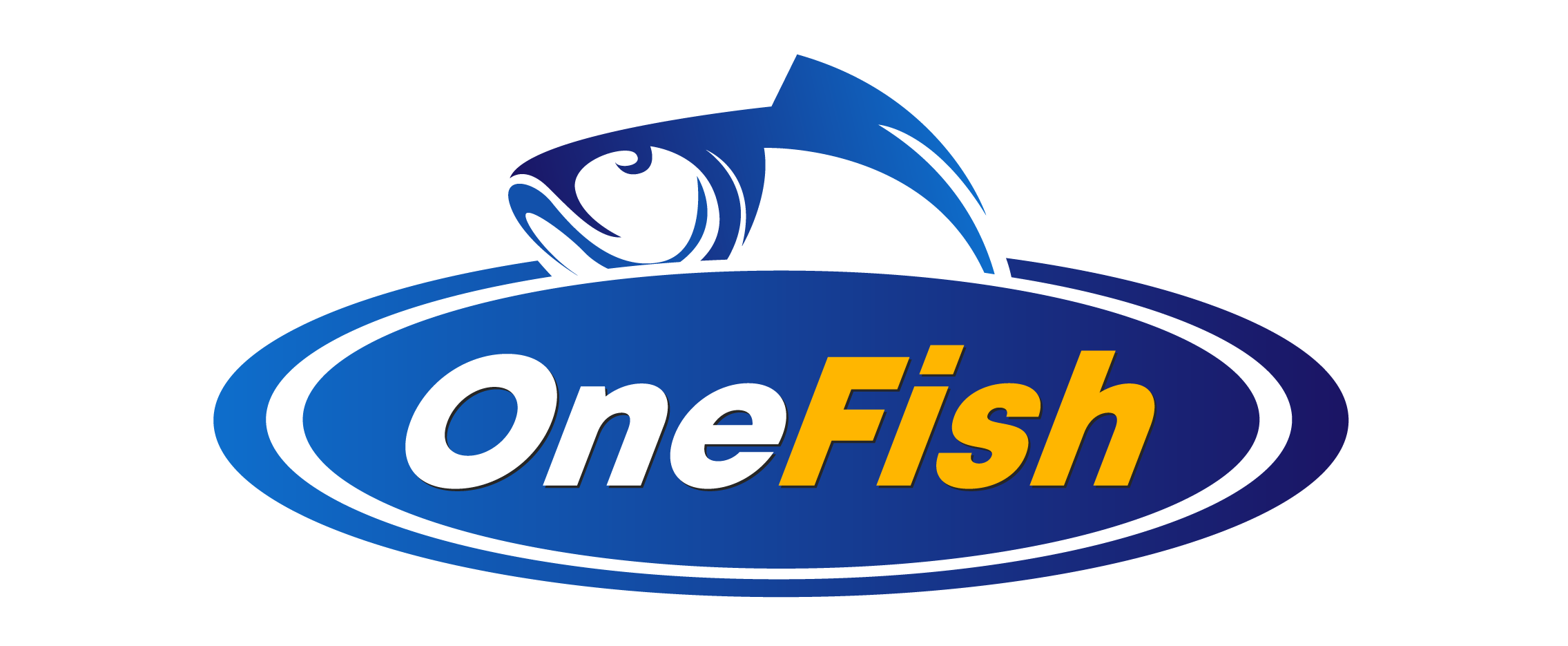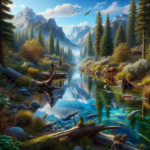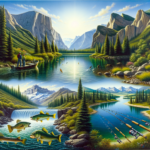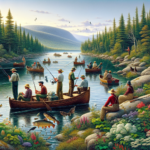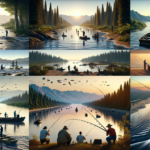Fishing in Oregon: Rivers, Lakes, and Coastal Waters
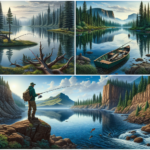
Introduction
Did you know that Oregon boasts over 360 miles of coastline and more than 6,000 lakes and reservoirs, making it a paradise for anglers? Whether you’re a seasoned fisherman or a novice looking to cast your first line, Oregon offers a diverse range of fishing opportunities that cater to all skill levels and interests.
In this article, we will explore the rich fishing landscape of Oregon, covering its rivers, lakes, and coastal waters. We’ll delve into the best fishing techniques, the species you can expect to catch, top fishing spots, and essential gear recommendations. Additionally, we’ll discuss seasonal considerations, local events, and tournaments, as well as safety and conservation practices to ensure a responsible and enjoyable fishing experience.
Understanding the intricacies of fishing in Oregon is crucial for maximizing your success and enjoyment. Whether you’re looking to find the best fishing spots, master a new technique, or prepare for an upcoming event, this comprehensive guide has you covered.
Background/Context
Historical or Cultural Significance
Fishing has been an integral part of Oregon’s history and culture for centuries. Indigenous tribes, such as the Chinook and Nez Perce, relied heavily on fishing for sustenance and trade. The state’s rivers, lakes, and coastal waters have long been celebrated for their abundant fish populations, particularly salmon and steelhead, which have cultural and economic significance.
Geographical Overview
Oregon’s diverse geography includes the Pacific coastline, the Cascade Mountain Range, and the high desert of Eastern Oregon. The state’s climate varies significantly, with coastal areas experiencing mild, wet winters and dry summers, while inland regions have more extreme temperature variations. This diversity creates a wide range of fishing environments, from cold, fast-flowing rivers to serene, warm-water lakes.
Key Points/Details
Fishing Techniques
Technique Overview
Oregon offers a variety of fishing techniques, including fly fishing, trolling, baitcasting, and spin fishing. Each technique has its own set of advantages and is suited to different types of water bodies and fish species.
When and Where to Use
Fly fishing is particularly popular in Oregon’s rivers and streams, especially for targeting trout and steelhead. Trolling is effective in larger lakes and reservoirs for catching salmon and kokanee. Baitcasting and spin fishing are versatile techniques that can be used in both freshwater and saltwater environments.
Recommended Gear
- Fly Fishing: 9-foot rod, 5-6 weight line, dry flies, nymphs, and streamers.
- Trolling: Medium-heavy rod, baitcasting reel, downriggers, and lures such as spoons and plugs.
- Baitcasting: Medium rod, baitcasting reel, soft plastics, and crankbaits.
- Spin Fishing: Medium-light rod, spinning reel, spinners, and jigs.
Species Information
Species Overview
Oregon’s waters are home to a wide variety of fish species, including salmon, steelhead, trout, bass, and sturgeon. Each species has unique habits, preferred habitats, and seasonal behaviors.
Best Practices
For salmon and steelhead, focus on river mouths and estuaries during their spawning runs in the fall and spring. Trout fishing is best in the cooler months of spring and fall, particularly in high-altitude lakes and streams. Bass fishing peaks in the warmer summer months in lakes and reservoirs.
Location Information
Top Fishing Spots
- Columbia River: Known for its salmon, steelhead, and sturgeon fishing. Access points include Bonneville Dam and Astoria.
- Crater Lake: Offers excellent trout fishing in a stunning natural setting. Access is limited to specific areas to protect the ecosystem.
- Rogue River: Famous for its salmon and steelhead runs. Popular access points include Grants Pass and Gold Beach.
- Deschutes River: Renowned for its fly fishing opportunities, particularly for trout. Access points include Bend and Maupin.
Regulations and Licenses
Oregon requires anglers to have a valid fishing license, which can be purchased online or at local retailers. Specific regulations, such as catch limits and seasonal restrictions, vary by location and species. It’s essential to check the Oregon Department of Fish and Wildlife (ODFW) website for the most up-to-date information.
Seasonal Considerations
Seasonal Variations
Fishing conditions in Oregon change throughout the year. Spring and fall are prime times for salmon and steelhead runs, while summer offers excellent opportunities for warm-water species like bass and panfish. Winter can be challenging due to cold temperatures and high water levels, but it can also be rewarding for hardy anglers targeting steelhead and trout.
Best Times to Fish
- Spring: Salmon and steelhead runs in rivers, trout fishing in lakes and streams.
- Summer: Bass and panfish in lakes and reservoirs, coastal fishing for rockfish and lingcod.
- Fall: Salmon and steelhead runs, trout fishing in cooler waters.
- Winter: Steelhead in rivers, trout in high-altitude lakes.
Events and Tournaments
Event Overview
Oregon hosts several fishing events and tournaments throughout the year, including the annual Buoy 10 Salmon Challenge in Astoria and the Deschutes River Fly Fishing Tournament. These events offer opportunities for anglers to compete, learn new techniques, and connect with the fishing community.
Preparation Tips
To prepare for a fishing event or tournament, ensure you have the appropriate gear, practice your techniques, and familiarize yourself with the event rules and regulations. It’s also helpful to scout the fishing location in advance and develop a strategy based on current conditions and fish behavior.
Tips and Best Practices
General Tips
- Always check local regulations and obtain the necessary licenses before fishing.
- Pay attention to weather conditions and water levels, as they can significantly impact fish behavior.
- Use the right gear for the species and technique you’re targeting.
- Practice catch and release to help preserve fish populations for future generations.
Avoid Common Mistakes
- Not checking local regulations: Always verify the rules for the area you’re fishing in to avoid fines and protect fish populations.
- Using the wrong gear: Ensure your equipment matches the species and technique you’re using.
- Ignoring weather conditions: Weather can greatly affect fish behavior, so plan your trips accordingly.
Advanced Techniques
- Drift Fishing: Effective for salmon and steelhead in rivers. Use a drift boat to cover more water and present your bait naturally.
- Jigging: Ideal for targeting deep-water species like rockfish and lingcod. Use a vertical jigging technique to entice strikes.
- Spey Casting: An advanced fly fishing technique for steelhead and salmon in large rivers. Requires specialized rods and lines.
Gear and Equipment Recommendations
Essential Gear
- Fishing rod and reel appropriate for your target species and technique.
- Fishing line, leaders, and tippets suited to the conditions and fish you’re targeting.
- Bait and lures specific to the species you’re fishing for.
- Tackle box with essential tools like pliers, line cutters, and hooks.
- Fishing license and any required permits.
Optional Gear/Upgrades
- Fish finder or sonar device for locating fish in larger bodies of water.
- Waders and wading boots for river and stream fishing.
- Portable GPS or mapping device for navigating remote fishing spots.
- High-quality polarized sunglasses to reduce glare and see fish more clearly.
Where to Buy or Rent
Local shops like Fisherman’s Marine & Outdoor and Sportsman’s Warehouse offer a wide range of fishing gear and equipment. Online retailers such as Bass Pro Shops and Cabela’s also provide extensive selections. For rentals, check with local outfitters and guide services in popular fishing areas.
Safety and Conservation
Safety Tips
- Always wear a life jacket when fishing from a boat or in deep water.
- Be aware of weather conditions and avoid fishing during storms or high winds.
- Carry a first aid kit and know basic first aid procedures.
- Inform someone of your fishing plans and expected return time.
Conservation Practices
- Practice catch and release to help maintain healthy fish populations.
- Follow local regulations regarding catch limits and size restrictions.
- Dispose of fishing line and other waste properly to protect wildlife.
- Respect the natural environment and avoid disturbing wildlife habitats.
Planning Your Trip
Accommodations
Oregon offers a variety of accommodations near popular fishing spots, including campgrounds, lodges, and hotels. For example, the Crater Lake Lodge provides a unique lodging experience near Crater Lake, while the Rogue River offers numerous campgrounds and cabins for anglers.
Travel Tips
When planning your trip, consider the best routes to your fishing destination and any transportation needs. Many fishing spots are accessible by car, but some remote areas may require hiking or boating. Check road conditions and weather forecasts before you travel.
Additional Activities
Oregon’s natural beauty offers plenty of activities for non-fishing time, including hiking, wildlife watching, and exploring local attractions. The Oregon Coast, for example, features stunning beaches, lighthouses, and charming coastal towns to explore.
Frequently Asked Questions (FAQs)
Do I need a fishing license to fish in Oregon?
Yes, a valid fishing license is required for all anglers aged 12 and older. Licenses can be purchased online or at local retailers.
What are the best times of year to fish in Oregon?
The best times to fish vary by species and location. Generally, spring and fall are ideal for salmon and steelhead, while summer is great for bass and panfish. Winter can be challenging but rewarding for steelhead and trout.
What gear do I need for fly fishing in Oregon?
A 9-foot rod with a 5-6 weight line is suitable for most fly fishing in Oregon. You’ll also need a variety of flies, including dry flies, nymphs, and streamers, as well as waders and wading boots for river fishing.
Are there any fishing tournaments in Oregon?
Yes, Oregon hosts several fishing tournaments throughout the year, including the Buoy 10 Salmon Challenge and the Deschutes River Fly Fishing Tournament. Check local event listings for dates and entry requirements.
Conclusion
Oregon’s diverse fishing opportunities make it a top destination for anglers of all skill levels. From the salmon-rich rivers to the tranquil lakes and rugged coastal waters, there’s something for everyone. By understanding the best techniques, species habits, and top fishing spots, you can maximize your success and enjoyment. Remember to follow local regulations, practice conservation, and prioritize safety to ensure a responsible and rewarding fishing experience.
Whether you’re planning your first fishing trip to Oregon or looking to refine your skills, this comprehensive guide provides the information you need to make the most of your adventure. So grab your gear, head to the water, and experience the incredible fishing that Oregon has to offer.
